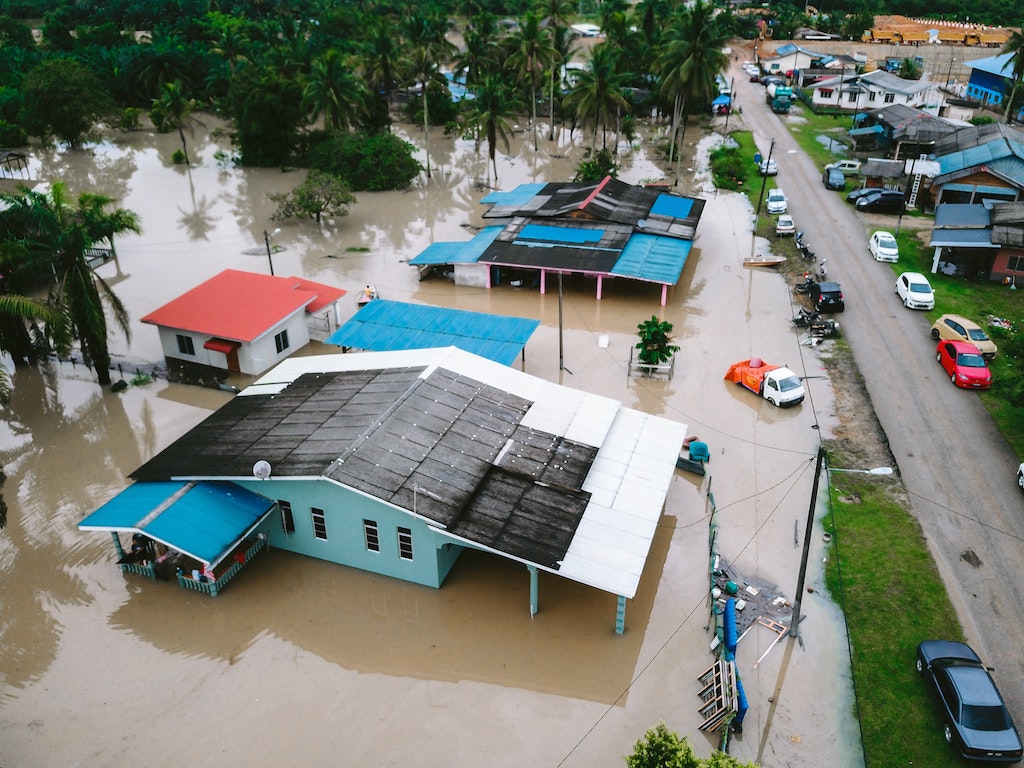Floods are among the most common and costly natural disasters in the United States. Floods cause an average of $5 billion in damage each year. And, while floods can happen anywhere, they’re most common in areas prone to severe weather, like hurricanes and thunderstorms. So, one of the most common questions homeowners ask is: “Does home insurance cover flood damage?” The short answer is no. Standard home insurance policies typically do not cover flood damage. However, there are various ways to protect your home against flood risks. Here we will detail home insurance and flood coverage, explore insurance for flood-risk homes, explain how to buy flood insurance, and discuss whether you need flood insurance.
Homeowners Insurance and Flood Coverage
Standard Homeowners Insurance
Standard homeowners insurance covers many types of water damage but has significant exclusions. Typically, it covers:
- Sudden and accidental water damage from burst pipes or overflow of appliances.
- Storm-related water damage, such as wind-driven rain or snow.
However, it does not cover water damage resulting from poor maintenance or long-term leaks, nor does it cover flood damage caused by natural disasters like hurricanes, heavy rains, or overflowing rivers.
Flood Insurance
Flood insurance is a separate policy specifically designed to cover damage caused by flooding. This type of insurance is essential for homes in high-risk flood zones but is available to any homeowner. Flood insurance policies are provided by the National Flood Insurance Program (NFIP) and private insurers.
Insurance for Flood Risk Homes
To determine if your home is at risk of flooding, consult the Federal Emergency Management Agency (FEMA) flood maps, which classify areas into different flood zones. Homes located in high-risk flood zones are more likely to experience floods and are often required to have flood insurance if they have a mortgage from a federally regulated lender.
Why You Need Flood Insurance
Flood insurance is vital because just a few inches of water can cause significant damage, leading to costly repairs. One inch of water can cause up to $25,000 in damage, and since standard homeowners insurance policies do not cover these costs, leaving homeowners financially vulnerable without flood insurance.
How to Buy Flood Insurance
Steps to Purchase Flood Insurance
- Assess Your Risk: Determine your home’s flood risk using FEMA flood maps or consult your insurance agent.
- Choose a Provider: You can purchase flood insurance through the NFIP or a private insurer. The NFIP is more common and often required for high-risk zones.
- Get a Quote: Obtain quotes from different providers to compare coverage options and premiums.
- Understand the Policy: Ensure you understand what is covered, including the building and contents coverage and any exclusions.
- Purchase the Policy: Complete the application process and make the necessary payments. Remember that a 30-day waiting period is typical before the policy becomes effective.
Flood Insurance Coverage Details
Flood insurance policies generally offer two types of coverage:
- Building Property Coverage: Covers the physical structure of your home, including the foundation, electrical and plumbing systems, appliances, and permanently installed fixtures.
- Personal Property Coverage: Covers personal belongings such as furniture, clothing, electronics, and other valuables.
Cost of Flood Insurance
The cost of flood insurance varies based on several factors, including your home’s flood zone, the age and design of the house, and the amount of coverage you choose. The average cost is $800/year.
Do You Need Flood Insurance?
Even if you live outside high-risk flood zones, you might still need flood insurance. About 20% of flood claims come from moderate- to low-risk areas. Factors to consider include:
- Historical Flood Data: Review past flooding events in your area.
- Proximity to Water Bodies: Homes near rivers, lakes, or coasts are at higher risk.
- Local Climate: Regions prone to heavy rainfall or hurricanes might require additional protection.
Mortgage Lender Requirements
Many mortgage lenders require flood insurance for homes in high-risk flood zones to protect their investment. If your home is in such a zone and you have a mortgage, purchasing flood insurance is mandatory.
Personal Financial Protection
Beyond lender requirements, having flood insurance provides peace of mind and financial protection. Without it, you may face substantial out-of-pocket expenses for repairs and replacements after a flood.
Understanding the limitations of your home insurance policy and the importance of flood insurance protects your home and financial well-being. While standard homeowners insurance does not cover flood damage, purchasing a separate flood insurance policy provides coverage against flooding. By assessing your flood risk, choosing the right insurance provider, and understanding your policy’s coverage, you can ensure that you are adequately protected. Whether you live in a high-risk flood zone or an area with moderate to low risk, flood insurance is a valuable investment.




